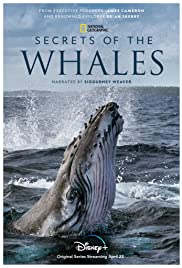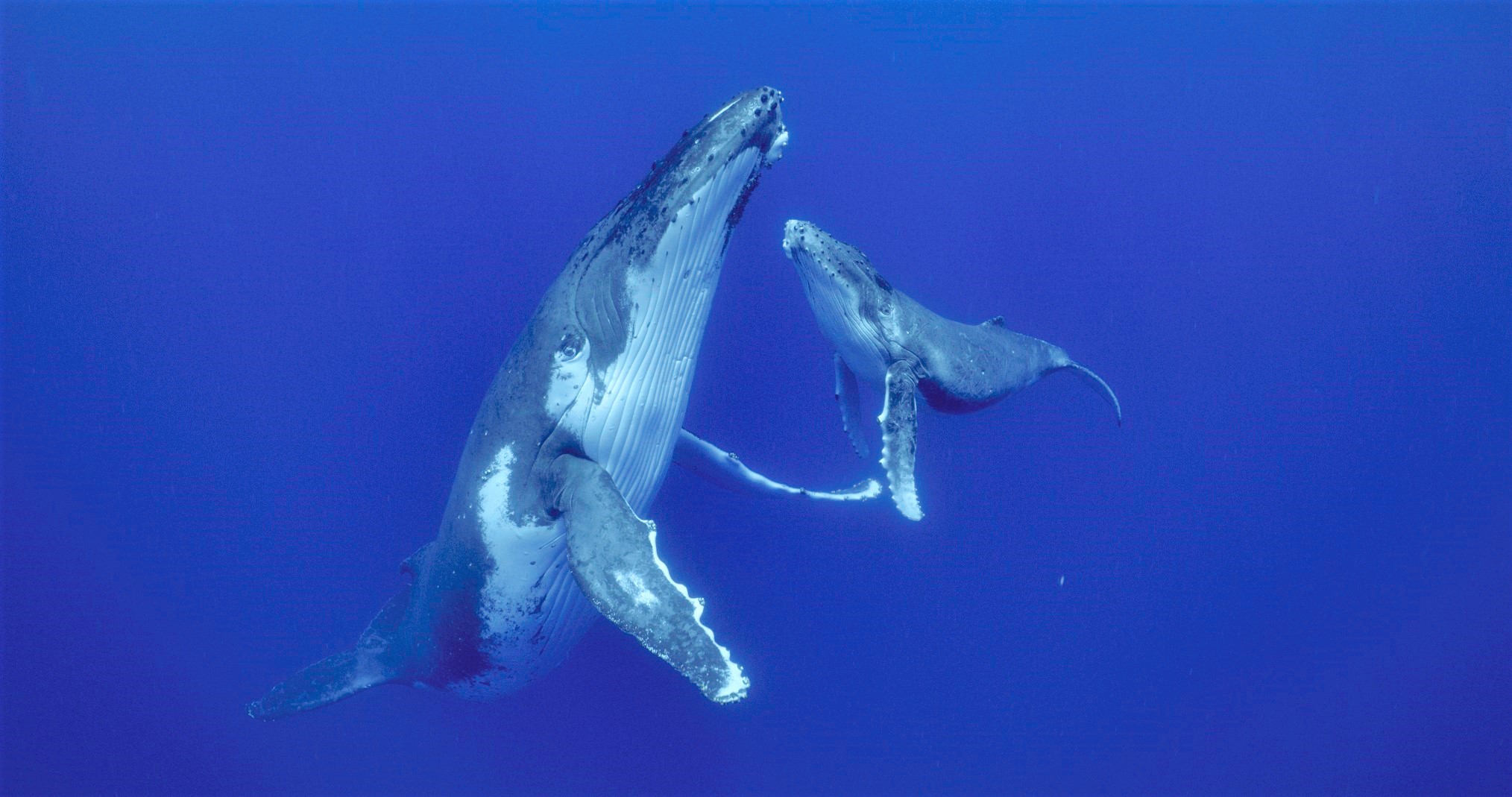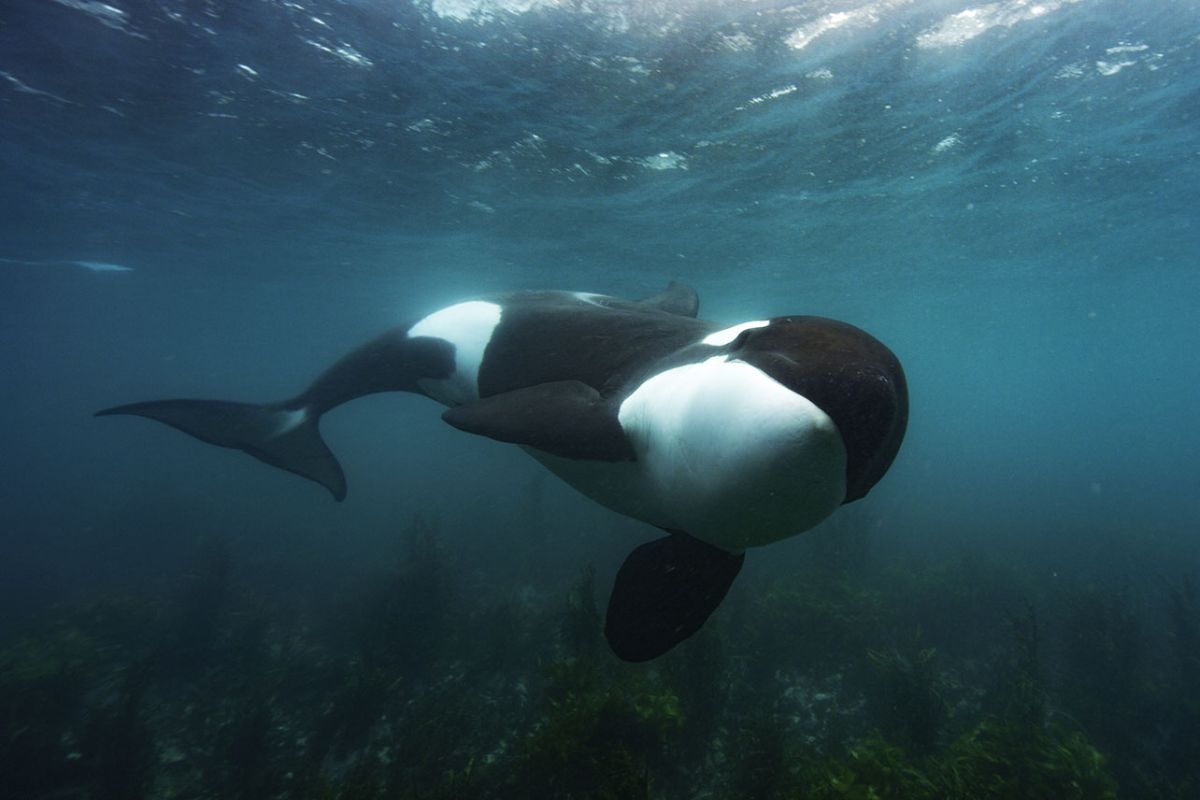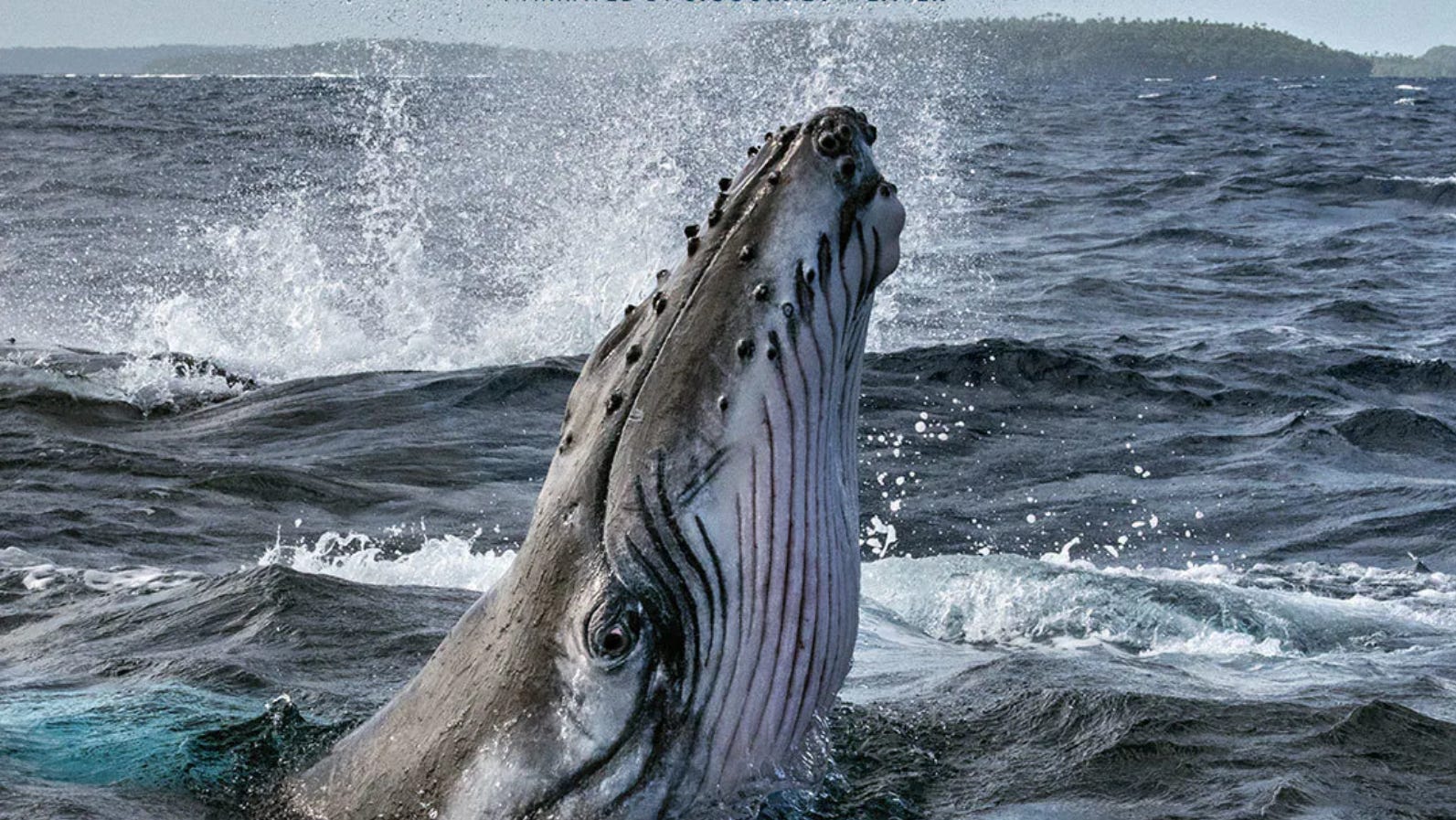This series features amazing scenes of whales in the wild and explores the cultural and social structures of five species of whales: sperm, belugas, narwhals, humpbacks and orcas.
Selected Awards & Cast Here.
Students will learn that whales have complex social structures, communication, and learned behaviors passed from generation to generation. They will view beautiful scenes of whales in their natural environment. These films are great for geography lessons.
Watch the series with your children and provide some of the additional interesting information about whales set out in the Helpful Background section. Ask them the first discussion question.
The premise of this film, now generally accepted by biologists, is that cetaceans have culture that has many of the attributes of human culture, except technology. They have complex social interactions and relationships. They communicate. They pass down learned behaviors from generation to generation. The attributes of these cultures are different in each species and sometimes different within species by geographic area.
Whales are of two types: baleen whales and toothed whales. Baleen whales have fibrous plates in their mouths instead of teeth. They use these plates to capture huge quantities of krill, plankton, and crustaceans. The teeth of the toothed whales enable them to grab fish and squid. The whales then swallow their food whole. The teeth are not used to tear the flesh or to grind it up.
Whales, dolphins, and porpoises make up the group of animals called cetaceans. There are 90 species of cetaceans.
Newest Research on Whale Culture: A recent study of whaling records shows that when sperm whale were first hunted on an industrial scale by whalers
using sailing ships in the early 19th century, the whales would, at first, respond to the threat to their pods by a solid phalanx of adults protecting the young. This was the way the whales had defended the pod against their only predator, the killer whale. However, this strategy was not effective against whalers who happily harpooned whales in the solid phalanx facing them. Whales soon learned , however, to flee upwind from the the whaling ships which could not follow them because the ships depended on the wind for locomotion. In addition, it appeared that once whales in an area figured this out, the knowledge and new defensive strategy was communicated to nearby pods.
Two Incidents of Whale Empathy Shown in the Film: The first is when the belugas befriend the lost and isolated narwhal. The second is when the diver is offered a dead stingray by an orca female.
A few More Interesting Facts About Whales:
- Whales are ungulates, a diverse group of originally land-dwelling mammals with hooves. Other ungulates are hippopotamuses, cattle, pigs, giraffes, camels, sheep, deer, tapirs, horses, and rhinoceroses. In fact, a cetacean’s closest relative is the hippopotamus, which lives mostly in water. The biological classification for whales is Kingdom: Animalia, Phylum: Chordata, Class: Mammalia, Order: Cetacea.
- The complex songs of the humpback whales are picked up by other humpback whales and can travel around the world. They can last up to 20 minutes. They change a little with repetition, just like human folksongs. Listen to songs of humpback whales from Monterey Bay https://www.youtube.com/watch?v=5tRMqbPH_pk This clip is two minutes.
- Whales are some of the longest living animals on the planet. The bowhead whale, a baleen whale found in the Arctic, can live for more than 200 years. Killer whales can live for more than 100 years.
- Each year gray whales travel about 10,000 miles, making their migrations the longest of any mammal.
- A Cuvier’s beaked whale has been recorded making a dive to the depth of 1.9 miles (2,992 m). It stayed submerged for more than two hours.
- In the Southern Hemisphere, humpback whales live off their fat reserves during their migration from tropical breeding grounds to their feeding waters in the Antarctic. This lasts for between five and seven months each year.
- Before the advent of the commercial whaling industry in the 18th century, there were more than 225,000 arctic blue whales. Today, there are less than 3000.
- More than 80% of North Atlantic right whales have become entangled in fishing gear at least once in their lives. Many will become entangled in fishing gear multiple times.
- Narwhal means “corpse whale.” The name comes from the fact that their skin color resembles that of a drowned sailor.
- Blue whales, the largest animal on the planet, can consume 3600 kg (about 8,000 lbs) of krill every day. Blue whales are larger than any dinosaur.
- Human beings and most land mammals breathe automatically. We are “unconscious breathers” who don’t have to think about when to take a breath. Cetaceans are what is known as “conscious breathers” – this means they have to think about and decide when to take a breath. When cetaceans sleep they “shut down” one side of their brain while the other half of the brain is alert to keep them breathing. As they sleep, cetaceans periodically switch sides of the brain so that both brains are rested and refreshed.
- The accumulated wax inside of a whale’s ear can be used to tell its age as well as any stresses or toxins it may have encountered.
- The genitals of male whales are tucked inside their body when they aren’t mating, reducing drag and allowing them to swim faster.
- Adult narwhals have only two teeth. In most males, the right tooth stays in the skull, while the left one forms a spiral that can extend over three meters.
A GEOGRAPHY LESSON
This series can be used to build geographical knowledge. In addition, students will have a greater appreciation for an episode if they know something about the locations filmed. TWM suggests that before each episode, on a map or globe show the locations and have students identify the hemisphere, the continent, the ocean, and the country with jurisdiction. This information is set out below with name of continent italicized and the name of the country underlined,
Episode One
- New Zealand (Southern Hemisphere, Oceania, Pacific Ocean; New Zealand);
- Norway (Northern Hemisphere; Europe; North Atlantic Ocean; Norway);
- Antarctica (Southern Hemisphere; Antarctica; Southern Ocean; no country);
- The Falkland Islands (Southern Hemisphere; South America; South Atlantic Ocean; United Kingdom);
- Patagonia (Southern Hemisphere; South America; South Atlantic Ocean; Argentina).
Episode Two
- Alaska (Northern Hemisphere; North America; Beaufort Sea; Bering Sea; Chukchi Sea; Gulf of Alaska; United States of America);
- Western Australia (Southern Hemisphere; Oceania; Indian Ocean; Australia);
- Cook Islands (Southern Hemisphere; Oceania; South Pacific Ocean; The Cook Islands).
Episode Three
- Canadian Arctic (Northern Hemisphere; North America; Arctic Ocean; Canada);
- Greenland (Northern Hemisphere; North America, Arctic Sea, Lincoln Sea, Baffin Bay, Greenland Sea, Labrador Straight, Denmark Straight; Denmark);
- Lancaster Sound (Northern Hemisphere; North America; Arctic Ocean; Canada);
- Gulf of St. Lawrence (Northern Hemisphere; North America; Gulf of St. Lawrence — the outlet of the North American Great Lakes via the St. Lawrence River into the North Atlantic Ocean; Canada).
Episode Four
- Dominica (Northern Hemisphere; North America; Caribbean Sea; Commonwealth of Dominica);
- The Azores (Northern Hemisphere; Europe; Atlantic Ocean; Portugal);
- Sri Lanka (Northern Hemisphere; Asia; Indian Ocean; Democratic Socialist Republic of Sri Lanka);
1. If whales are so smart, communicative ,and have culture, why haven’t they developed a technological society as we have?
Suggested Response:
There are probably a lot of reasons but one of the primary reasons is that they don’t have hands with opposable thumbs. Another reason is that the sea is not as hospitalble for the development of tools. Where do you find a stick or a rock in the middle of the ocean?
2. Whales are described as “sentient beings.” What does that mean and how does that affect our moral obligations to them?
Suggested Response:
The term means different things to different people. Common usage of “sentient being” is an animal (including a human being) that can suffer, i.e., that have desires for food and water, shelter, companionship, freedom of movement, and avoidance of pain. As to our relationship with animals, some people will contend that animals such as cetaceans and higher-level primates deserve to be given more consideration than other animals because they can think and reason. For an interesting way to present these issues adapt the concentric circle diagram presented in Visual Learning Exercise — Cesar Chavez’ Rejection of the Concept of “the Other”
1. Much of the plastic that we use ends up in the oceans and injures the fish and aquatic mammals. What can you do to reduce your consumption of plastic?
1. For any episode shown, have students research and complete the Geography Lesson.
2. Research and write an essay on our moral responsibilities to the whales.
Multimedia: Anchor Standard #7 for Reading (for both ELA classes and for History/Social Studies, Science, and Technical Classes). (The three Anchor Standards read: “Integrate and evaluate content presented in diverse media, including visually and quantitatively as well as in words.”) CCSS pp. 35 & 60. See also Anchor Standard # 2 for ELA Speaking and Listening, CCSS pg. 48.
Reading: Anchor Standards #s 1, 2, 7 and 8 for Reading and related standards (for both ELA classes and for History/Social Studies, Science, and Technical Classes). CCSS pp. 35 & 60.
Writing: Anchor Standards #s 1 – 5 and 7- 10 for Writing and related standards (for both ELA classes and for History/Social Studies, Science, and Technical Classes). CCSS pp. 41 & 63.
Speaking and Listening: Anchor Standards #s 1 – 3 (for ELA classes). CCSS pg. 48.
Not all assignments reach all Anchor Standards. Teachers are encouraged to review the specific standards to make sure that over the term all standards are met.
This Learning Guide was written by James A. Frieden. Thanks to Professor Lori Marino for consultation as to this Guide. It was published on May 30, 2021








